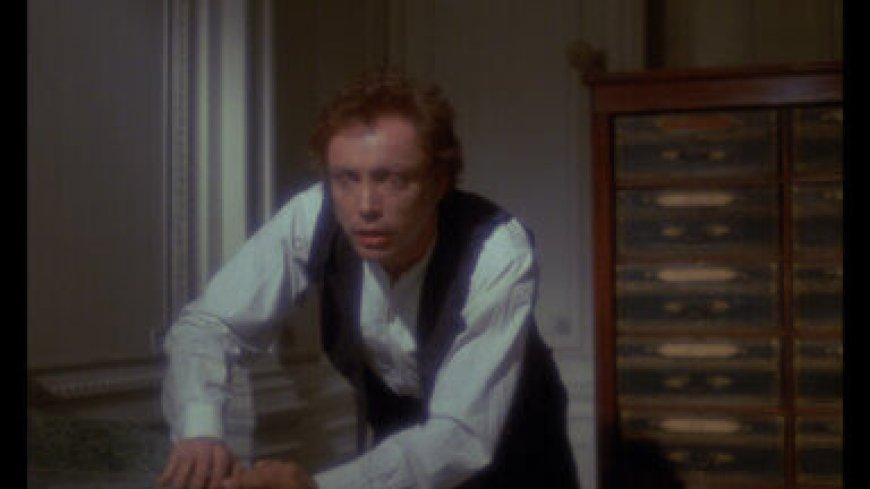Looking back on Udo Kier’s career across 200 films
Summing up out gay German actor Udo Kier’s screen persona across his 200 films is challenging. He’s bounced from the arthouse to the grindhouse, with little in between. Anthology Film Archives’ “The Strange Case of Udo Kier” series could’ve chosen several completely different lineups of his films. He’s gone back and forth between exploitation and … Read More

Summing up out gay German actor Udo Kier’s screen persona across his 200 films is challenging. He’s bounced from the arthouse to the grindhouse, with little in between. Anthology Film Archives’ “The Strange Case of Udo Kier” series could’ve chosen several completely different lineups of his films. He’s gone back and forth between exploitation and horror and experimental films. (“The Strange Case of Udo Kier” offers a chance to see rarities like Gabor Body’s “Narcissus and Psyche” and gay director Werner Schroeter’s “Flocons d’or.”) He’s terrific at playing creeps and villains, whether they be Hitler, Count Dracula or a German-American businessman who plots to destroy a Brazilian town in “Bacurau.”
He’s worked with queer directors Gus van Sant (hiring the sex workers played by River Phoenix and Keanu Reeves in “My Own Private Idaho”) and Rainer Werner Fassbinder. With 2021’s “Swan Song,” he finally got a real star vehicle. Kier will be present at the screenings of “Blood for Dracula” on the 19th and “Egomania – Island Without Hope” and “Bacurau” on the 20th.
A 22-year-old Kier made his film debut in Michael Sarne’s 1966 short “The Road To Saint Tropez.” (The director would go on to make the extremely queer but disastrous Gore Vidal adaptation “Myra Breckenridge” a few years later.) Sarne comments ironically on a summertime affair between a woman and the hitchhiker she picks up (Kier), as Fenella Fielding’s quasi-documentary English-language voice-over drowns out French dialogue. A pretty but insubstantial ode to the south of France, nothing much is at stake here, but the film becomes more dramatic than it initially promises. “The Road to Saint Tropez” treats sex as a pastime as fleeting as the seasons themselves. While Sarne’s camera is attracted to women in bikinis by the beach, Kier’s beauty and his position as the object of desire is central to the short. It screens with Michael Armstrong’s gory horror feature “Mark of the Devil,” in which Kier plays a witch hunter.
Christoph Schlingensief’s “100 Years of Adolf Hitler” refuses to grant Hitler (Udo Kier) the slightest respect, even by seeing him as a demonic power. He’s as ridiculous as he is evil. In fact, this glimpse into the bunker looks like an attack on the Hitler-meme generator “Downfall,” years before it was made. (German directors Wim Wenders and Margarethe von Trotta also come in for disses.) The filmmaking process itself was a stunt. “100 Years of Adolf Hitler” was shot in one 16-hour stretch with the cast and crew trapped together in a real bunker. Instead of using standard film lights, Schlingenseif lit the set with a flashlight. It plays like a ‘60s underground theater provocation, with Hitler finding scatological means to prove his merits as an artist and aggressively hysterical performances from the whole cast. It prioritizes chaos, and while it treats realism as anathema, that’s probably an accurate rendering of the last days of Hitler and his inner circle.
Werner Schroeter spent the ‘70s making opera-inspired experimental films with a tenuous connection to narrative. Running 163 minutes and spanning four sections, “Flocons d’or” uses a different style and setting for each. Kier appears at the beginning and end to stack a house of cards, and he also stars in the fourth part as Franzl, a man who stalks and gropes a woman in a garden after rising from the dead. The film is most compelling in the first section, a parodic take on the telenovela aesthetic set among a decadent rich family in 1949 Cuba. But it proves uninterested in sustaining anything beyond a vague mood for more than a few minutes. Its slow pace and 163-minute runtime prove enervating. Schroeter owed a large debt to the queer underground films of ‘60s New York, with most of his actors performing as though they were drag queens, but “Flocons d’or” displays a distinct lack of energy. The point of all this pastiche remains elusive. Still, although “Flocons d’or” might have been more watchable if one section were developed into a feature-length film, it wouldn’t be the same film without its excess and difficulties.
Walerian Borowczyk’s 1981 “The Strange Case of Dr. Jekyll and Miss Osbourne” puts a subversive spin on the “Dr. Jekyll and Mr. Hyde” story. Here, Kier’s Jekyll is both a writer and doctor. At a party during which he announces his engagement to Miss Osbourne (Martina Pierro), a hired performer is murdered. When Dr. Jekyll leaves the party, his alter ego Hyde (Gérard Zalcberg) takes over, abusing the guests physically and sexually. “The Strange Case of Dr. Jekyll and Miss Osbourne” tells the audience that the danger’s coming from the inside. Given how familiar the original story is, few people will be surprised that Dr. Jekyll and Hyde are the same person, even if they’re played by two different actors, but upper-class corruption and sexism are exposed and upended. It’s a feminist take on the story, allowing Miss Osbourne to transform herself like Dr. Jekyll and let her own id loose. It ends with a grim but uncompromising vision of what it might mean for two people with a potential for violence to fully embrace their dark side while becoming genuine partners.
“The Strange Case of Udo Kier” | Plays at Anthology Film Archives May 17th-June 4th

 Mark
Mark 





